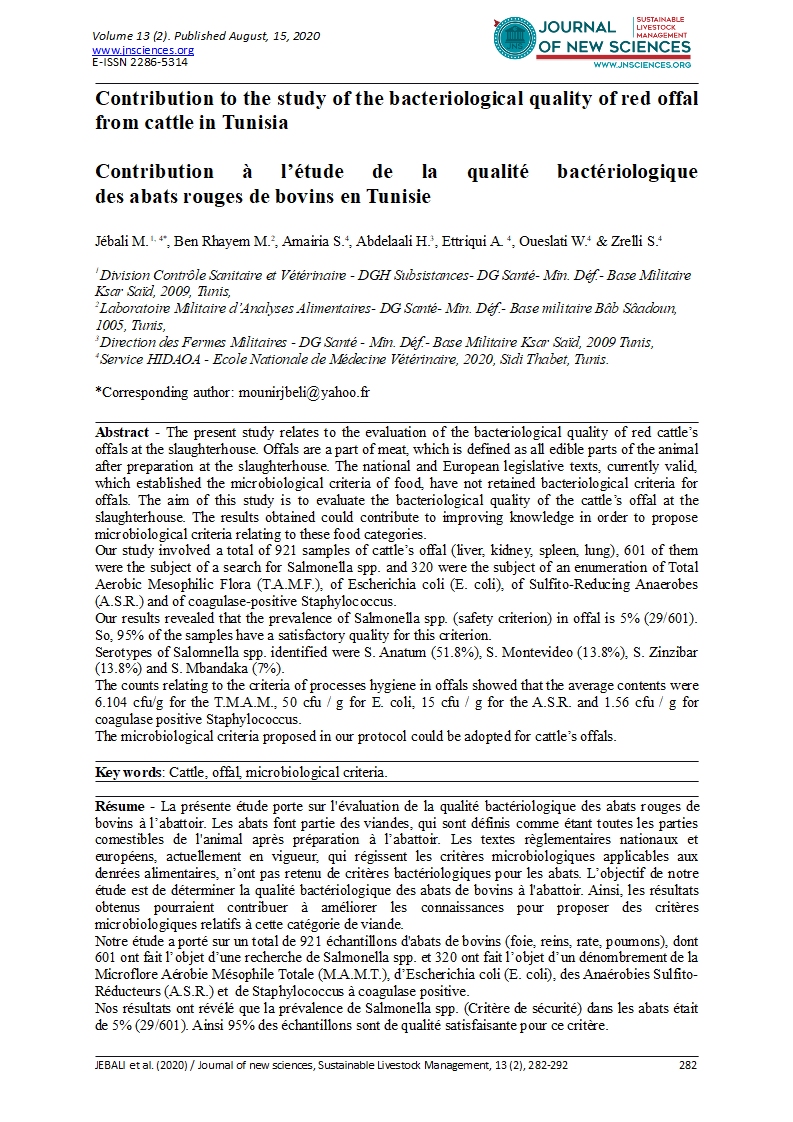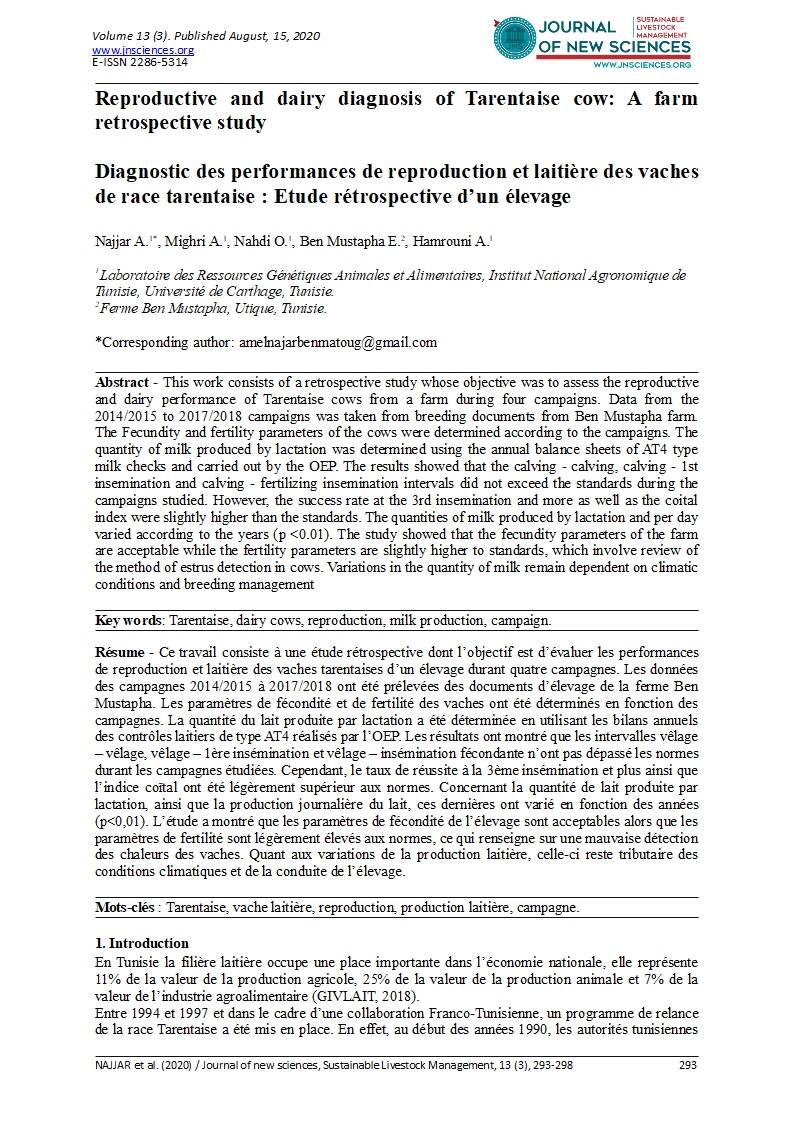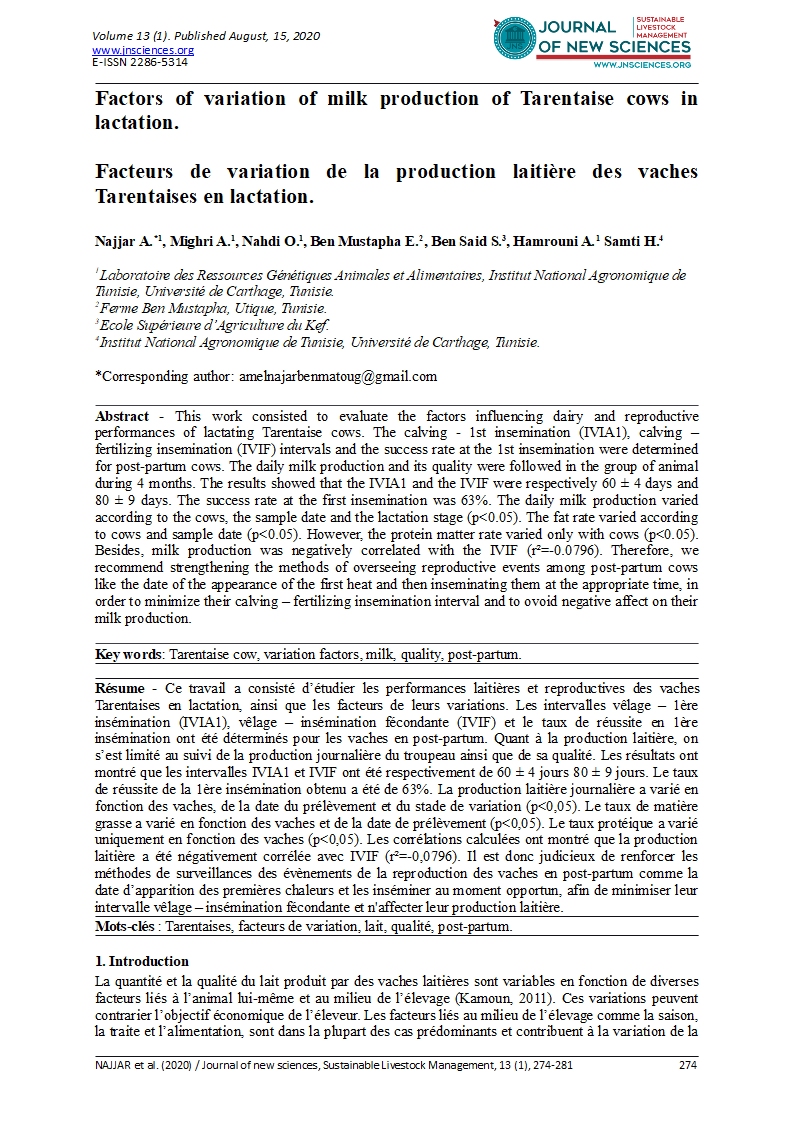- Category: Volume 13
- Hits: 2970
Contribution to the study of the bacteriological quality of red offal from cattle in Tunisia

Contribution à l’étude de la qualité bactériologique des abats rouges de bovins en Tunisie
Jébali M.1, 4
Ben Rhayem M.2
Amairia S.4
Abdelaali H.3
Ettriqui A. 4
Oueslati W.4
Zrelli S.4
1Division Contrôle Sanitaire et Vétérinaire - DGH Subsistances- DG Santé- Min. Déf.- Base Militaire Ksar Saïd, 2009, Tunis,
2Laboratoire Militaire d’Analyses Alimentaires- DG Santé- Min. Déf.- Base militaire Bâb Sâadoun, 1005, Tunis,
3Direction des Fermes Militaires - DG Santé - Min. Déf.- Base Militaire Ksar Saïd, 2009 Tunis,
4Service HIDAOA - Ecole Nationale de Médecine Vétérinaire, 2020, Sidi Thabet, Tunis.
Abstract - The present study relates to the evaluation of the bacteriological quality of red cattle’s offals at the slaughterhouse. Offals are a part of meat, which is defined as all edible parts of the animal after preparation at the slaughterhouse. The national and European legislative texts, currently valid, which established the microbiological criteria of food, have not retained bacteriological criteria for offals. The aim of this study is to evaluate the bacteriological quality of the cattle’s offal at the slaughterhouse. The results obtained could contribute to improving knowledge in order to propose microbiological criteria relating to these food categories. Our study involved a total of 921 samples of cattle’s offal (liver, kidney, spleen, lung), 601 of them were the subject of a search for Salmonella spp. and 320 were the subject of an enumeration of Total Aerobic Mesophilic Flora (T.A.M.F.), of Escherichia coli (E. coli), of Sulfito-Reducing Anaerobes (A.S.R.) and of coagulase-positive Staphylococcus. Our results revealed that the prevalence of Salmonella spp. (safety criterion) in offal is 5% (29/601). So, 95% of the samples have a satisfactory quality for this criterion. Serotypes of Salomnella spp. identified were S. Anatum (51.8%), S. Montevideo (13.8%), S. Zinzibar (13.8%) and S. Mbandaka (7%). The counts relating to the criteria of processes hygiene in offals showed that the average contents were 6.104 cfu/g for the T.M.A.M., 50 cfu / g for E. coli, 15 cfu / g for the A.S.R. and 1.56 cfu / g for coagulase positive Staphylococcus. The microbiological criteria proposed in our protocol could be adopted for cattle’s offals.
Key words: Cattle, offal, microbiological criteria.


